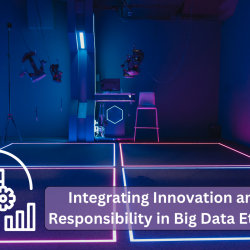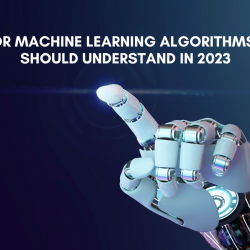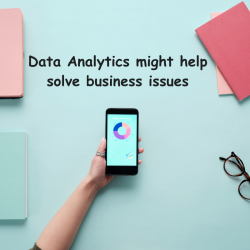The Three phases of Data Science: The Past, Present, and Future


Introduction to Data Science
Welcome to the wonderful world of Data Science! It’s an exciting field that is evolving and innovating rapidly. As we look at its past, present, and future, it’s important to understand just how far the discipline has come and what lies ahead.
It all began with the analytical revolution of the mid 1990s, when computer technology started to become more widely available. What followed was a push for data driven decision making and business intelligence that would lead to unprecedented shifts in organizations across industries. The business world needed someone with expertise in analytics and statistics – enter Data Science.
Data Science took off during this time, as organizations looked for ways to gain competitive advantages. It also had a huge impact on academia, leading universities to create new courses focused on analytics and data mining technologies. Additionally, software companies started developing new tools that could automate tasks like predictive analytics and machine learning models.
Today’s big data landscape is largely shaped by technologies like Hadoop, Apache Spark, Kafka, cloud computing services, internet of things platforms – just to name a few. All these advances have enabled not only powerful exploring of massive datasets but also an astounding level of predictive accuracy due to complex correlations within these datasets.
The Past of Data Science
In its earliest form, data science was known as ‘data mining’ and first began in the late 1950s. This involved analyzing large quantities of structured information to uncover patterns and trends that could be used for predictive analysis. At the time, data mining was limited due to lack of computing power and memory, but it still formed an important foundation for what today we call data science.
As computers became more powerful during the 1970s and 80s, data mining saw significant advancements. Techniques like neural networks were developed to help analyze larger datasets than ever before. This paved the way for more advanced techniques such as machine learning and artificial intelligence (AI) that are now commonplace in modern day data analysis.
Today we are entering a new phase in data science where AI is being used almost ubiquitously across a range of different industries. With cutting edge algorithms combined with powerful computing power and modern storage solutions we can gather actionable insights from vast quantities of data that wasn’t previously possible.
The Present of Data Science
Data Science has been around for decades and like most emerging technologies it has gone through different phases of development. These 3 phases can be broken down into the Past, Present, and Future.
The past of Data Science saw its beginnings as an offshoot from statistics during the 1980s. Statistical models were used to draw insights from large datasets with an aim of understanding trends in various contexts. This was followed by Artificial Intelligence (AI) advancements that enabled machines to make decisions based on large sets of data.
The present state of Data Science is a result of AI advancements combined with Machine Learning (ML). ML algorithms enable computers to “learn” from huge amounts of data by recognizing patterns within it and making predictions accordingly. This means that businesses can now use machines to identify trends even before they become visible enough for humans to see them.
Finally, predictive analytics is another powerful tool used by Data Scientists today which allows them to identify current trends and events in order to forecast future outcomes accurately. By using predictive analytics techniques like mathematical modeling or machine learning algorithms.
The Future of Data Science
In the past, data science was primarily driven by manual labor. Researchers handcrafted complex algorithms to generate valuable insights from their data sets. This approach was often time consuming and prone to errors—but it was the best tool available at the time.
The present phase of data science has seen a huge transformation in the tools available, while still requiring careful analysis by experts. Modern technologies such as machine learning, big data analytics, artificial intelligence, and predictive modeling have enabled organizations to gain unprecedented insights from their data sets.
However, as we look into the future of data science, there are a few key areas that will shape its evolution beyond what we know today. Automated machine learning tools promise to automate routine tasks such as feature engineering and model selection—freeing up precious time for data scientists so that they can focus on more creative problem solving tasks instead.
Barriers to Entering the Field of Data Science
The past phase of data science has been marked with limited access to data. Data sources were highly concentrated and expensive, making them difficult to come by unless an organization had deep pockets. Thus, aspiring data scientists had little opportunity or resources to further their knowledge or draw meaningful conclusions from collected data.
The present phase of data science is characterized by a high cost for technology and tools which are necessary for an effective use of big data. The improved availability of information means more advanced technology needs to be used as well as greater expertise to interpret findings from large datasets.
Looking into the future of Data Science reveals a lack of skilled talent that could fill the need for skilled specialists in this field. As machine learning and AI become integral parts of everyday life, there is an increasing need for knowledgeable professionals who understand how to leverage big data correctly and interpret results effectively – yet many organizations struggle to find qualified personnel who meet these standards.
Opportunities for Newcomers in the Field of Data Science
The advancements made in data science over time can be divided into three major phases: The Past, The Present, and The Future. In the past, data mining was used to analyze large volumes of structured data to uncover patterns and gain valuable insights from it. Then came trend analytics which used machine learning algorithms to identify patterns in both structured and unstructured data sources.
As companies race to adopt these technologies, they will need skilled workforce that understand how to implement AI/ML solutions. Open source tools such as Python programming language and Apache Spark make it easy for any developer or programmer with basic understanding of coding to quickly learn these technologies. There are also plenty of online courses available for those looking for more comprehensive training.
The increasing demand for data scientists makes this a great time to break into the field;a recent study projects a 28% increase in demand for these roles by 2022! With so many opportunities opening up across various industries such as finance, accounting, healthcare, ecommerce etc.
Check Out:
Best Data Analytics Courses In India






Ingen kommentarer endnu